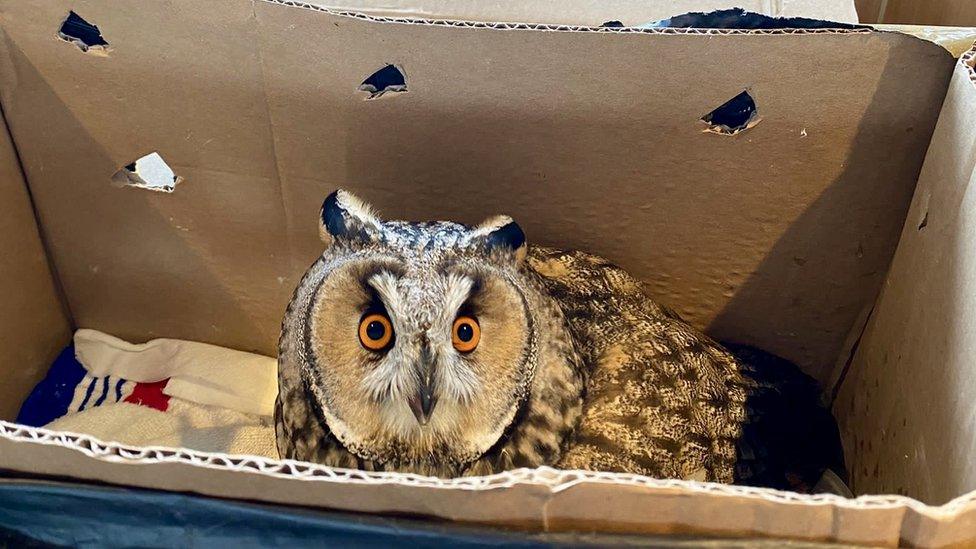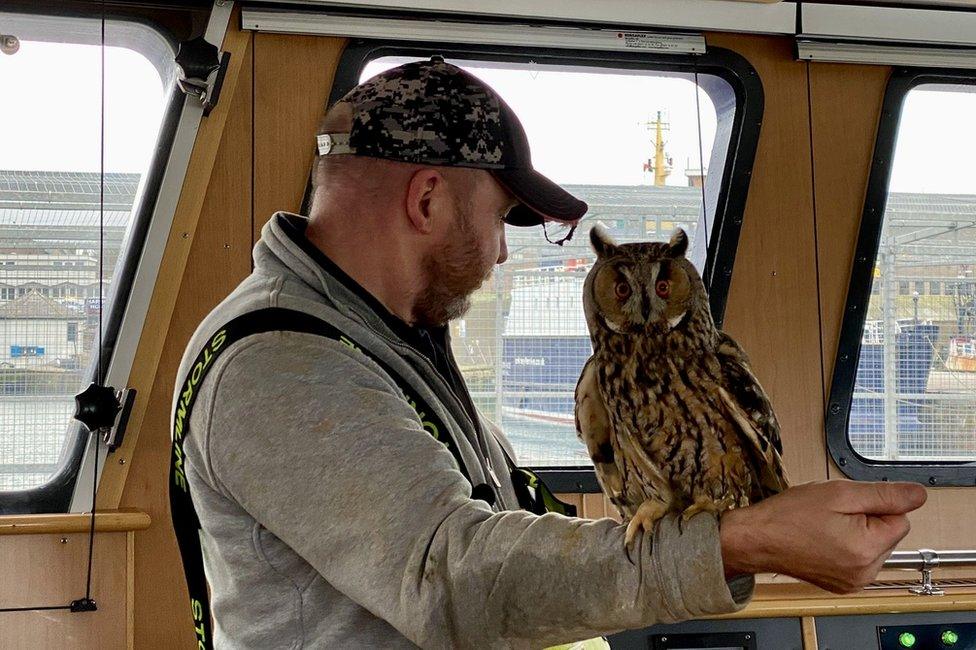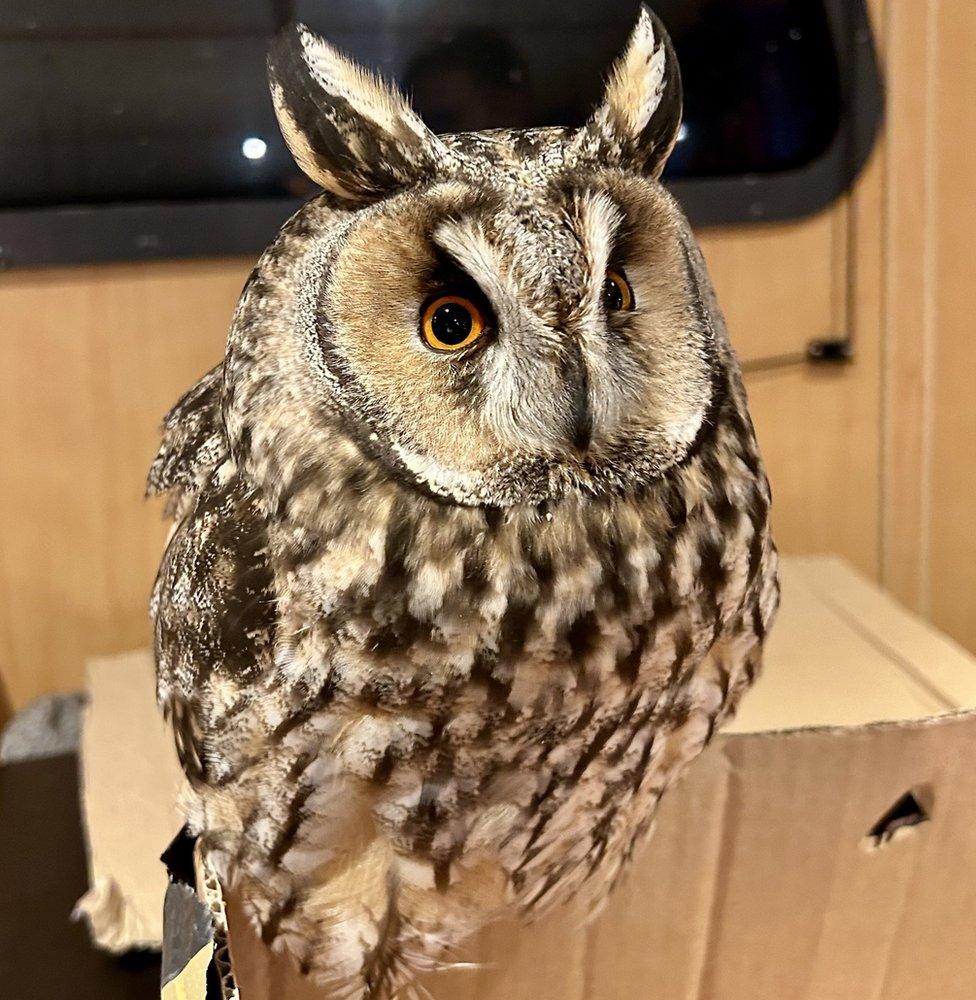Attacked owl rescued by fishing crew 100 miles out to sea
- Published

The long-eared owl is believed to have been blown off its normal course
A long-eared owl shocked crew on board a fishing boat over 100 miles off the north coast of Scotland.
The bird was rescued by a crew member who spotted it being attacked by seagulls.
It suffered minor injuries but was cared for by the team on board Peterhead-registered Benarkle II for the rest of their trip.
It is believed the owl had been blown off its normal course before landing on the boat.
The Benarkle II crew said the poorly creature perked up a great deal after being "beefed up" with some chopped steak.
After returning to harbour, the owl was handed over to the Huntly Falconry Centre who said it was very unusual for it to have been so far from land.
Crew members said the bird appeared on board the trawler in the middle of their trip last week - and seemed perfectly happy once it had settled into its new surroundings.

The owl in its temporary home
A social media post, external from the team added: "[It] was starting to become used to the comings and goings of crew in the wheelhouse, even letting him out to stretch his wings.
"Although getting an unwilling owl to go back into his temporary home isn't the easiest of operations!"
Once the trawler returned to Peterhead, the owl was taken to the Huntly Falconry Centre to fully recover.

The bird got used to life at sea
John Barrie, who owns the centre, said: "The owl is just tired after the journey.
"They'd fed it up on the boat, and we'll do the same here.
"It just needs a bit of beef on it.
"It'll be here for a week or two then released back into the wild."

The owl got to know its new crewmates
Mr Barrie said the bird was over 100 miles out from the coast.
He added: "It wasn't in its own environment, it must've just got blown off course.
"These same guys brought in a hobby falcon a couple years ago and it was about 400 miles out.
"It's funny that that's twice they've brought in a bird. There's obviously someone on board who knows about birds."

The owl stayed on board for the rest of the trip
Long-eared owls are known for their distinct white eyebrows and striking bright orange eyes.
Despite being called the long-eared owl, the tufts on its head aren't actually ears at all.
The large head feathers are simply used to make it look bigger when the bird is alarmed.

The owl is recovering after its adventure
They are said to be the most nocturnal of all the owls.
The breed looks deceptively long and thin while flying, but is usually no larger than a woodpigeon.
And they traditionally prefer dense coniferous woodlands to being at sea.